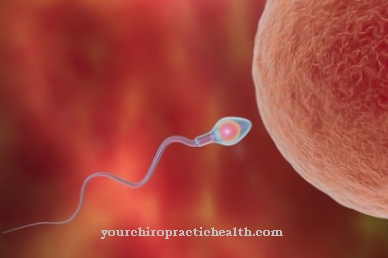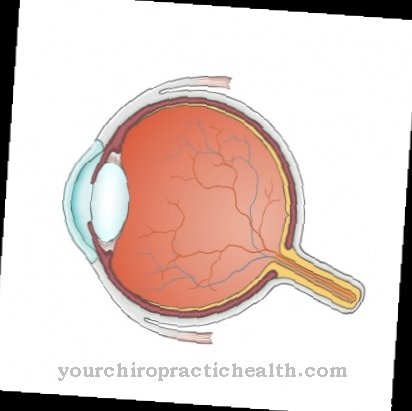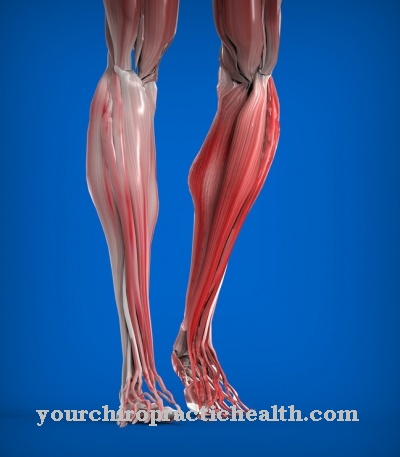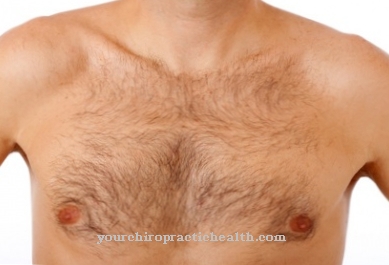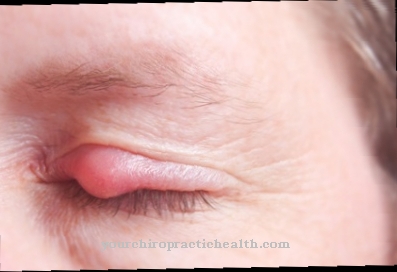What is a Muscle pump? What is their function? Which complaints occur when the function of the muscle pump is more limited? These questions should be answered below.
What is the muscle pump?
The muscle pump helps the blood flow back into the deeper veins that flow through the muscles. As the muscles become tense and relaxed, these deep-seated veins are compressed. The backflow of the blood takes place with the support of the muscle pump and the venous valves directed towards the heart.
Function & task

In addition to the function of the muscle pump, there is also the venous pump: the venous valves push the blood towards the heart. The functioning of the venous valves prevents the blood from flowing back: If the pressure above the venous valve is greater than below when the blood is being passed on, it closes and prevents the blood from flowing back. However, the function of the venous pump alone is not sufficient to ensure the return of blood to the heart. Support from the muscle pump is necessary, especially in the legs. Therefore, the backflow of the blood must also be supported by movements of the muscles in the form of the muscle pump.
The fascia, which run through the muscle tissue and externally surround the muscles, act as natural abutments so that the muscle movement can always exert pressure on the veins. A contracted muscle doing work reduces the diameter of the vein. The blood currently located there is pressed up and down, and it is transported further towards the heart through an opening venous valve.
The blood, which is located just above the adjoining venous valve below, will close the lower venous valve and will be conveyed with the suction from above towards the heart. There is a constant interplay between relaxed and tense muscles, opening and closing venous valves that ensure the blood flow back to the heart.
A well-working muscle pump relieves the heart because the heart needs less work to move the blood from the lower extremities into the veins and upwards.
The muscle pump can deteriorate or stop working under various circumstances. A plaster cast induces a deliberate lack of exercise and causes the muscle pump to stop. Sitting for long periods in a plane or car also reduces the backflow of blood in the leg veins. This supports blood clots, thrombosis or edema.
Venous diseases can arise as a result of a lack of exercise: the muscles have not been stimulated enough to move and have lost their strength. The fasciae have lost their elasticity and practically fail to act as an abutment on the leg veins.
A compression stocking or a compression bandage must now act as an external abutment to eliminate edema and restore the blood flow back. For a healthy, functioning metabolism, a balance between arterial oxygen and nutrient supply and venous removal of CO2 and metabolic breakdown products is of great importance. Recourse to external resources alone is not enough. The body needs to be animated to move and metabolic activity.
Exercise always entails higher calorie consumption. Applied to the legs, this means: In particular, rhythmic movements from the soles of the feet to the calves to the thighs with tension and relaxation of the muscles exert a pressure and suction effect and activate the vein pump and muscle pump. These movements, at least by actively moving the feet and calves, should often be done at a desk or at a standing workplace.
Activities that challenge the muscles of the feet and all of the leg muscles are even more sensible: walking, climbing stairs, hiking, Nordic walking, jogging, swimming or cycling contribute significantly to keeping muscles, venous pumps and muscle pumps active and functional and prevent venous diseases. In addition to edema, varicose veins or thrombosis are another consequence of a weak muscle pump.
Illnesses & ailments
If people are so restricted in their mobility that they can no longer mobilize themselves adequately or if they have peripheral arterial occlusive disease (PAD or intermittent claudication), polyneuropathy (e.g. as a result of diabetes mellitus or alcohol abuse), the measures with external compression and guidance are sufficient Movement no longer off. Here come one manual drainage or hydrotherapy as decongestive therapy for the range of treatments.
If the backflow of the blood is reduced, varicose veins and thrombosis can develop. With primary varicose veins, the muscle pump in the deeper veins no longer works properly. The blood there builds up and flows towards the feet. This creates edema and the feeling of heavy legs. Itching and a feeling of tension can also occur. In more severe cases, eczema and inflammation of the skin can occur.
The ulcer, the poorly healing open leg, mostly on the lower leg, is feared. The venous valves of the deep veins cannot do the transport work to the heart on their own. Now more blood flows back to the heart via the superficial veins and the varicose veins develop. Secondary varicose veins develop when a new bypass circuit is to be formed: In this case, a deeper vein is blocked by a thrombosis. The thrombosis can also develop in the superficial varicose veins.
Symptoms of thrombosis can include: The leg feels heavy and painful. It feels warm in the affected area. The skin may turn bluish. Ultimately, the thrombosis has to be resolved, an operation has to be carried out or blood clotting is inhibited.
Risk factors are, for example, smoking in combination with the birth control pill, obesity, operations, pregnancy and sedentary lifestyle, even during long trips. A well-developed muscle pump increases the likelihood that the thrombosis will not develop or that its onset will be delayed.

